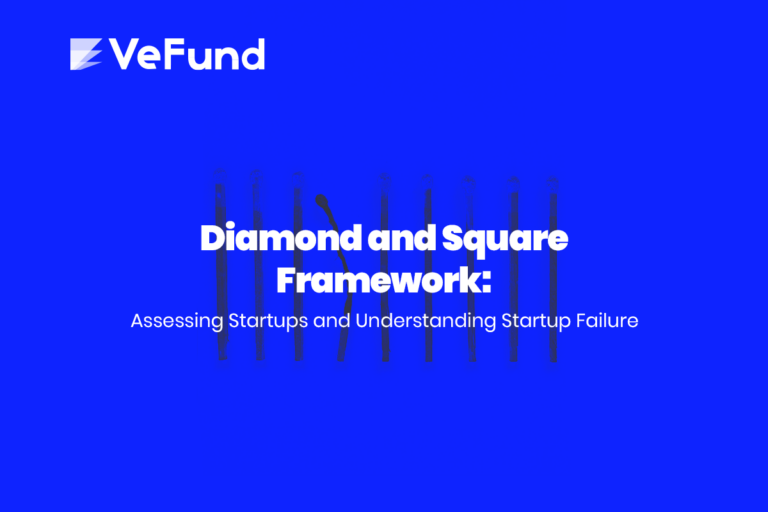Qualitative Valuation Methods for Startups: A Guide for VeFund’s Valuation Calculator
Valuation for startups takes different shapes due to the variety of startups and available information for valuation. All the methods can be categorized as quantitative or qualitative. You can check out when to use each category for your startup through our Quantitative v.s. Qualitative Valuation Methods article.
Here we will explore the quantitative methods used by VeFund for automated valuation. This article is suitable for anyone looking to use VeFund’s valuation calculator or understand the valuation techniques in general. The aim is to clarify the logic behind the qualitative valuation methods.
Before we start, we need to put things in perspective and quickly define what VeFund’s calculator is. VeFund’s automated valuation calculator is a tool we developed to value startups. We use a mix of five valuation methods: three quantitative and two qualitative.
The calculator then takes the weighted average of these five methods to arrive at the final valuation. These weights are assigned based on the startup’s stage of development, more on that here.
The core of this article is the two qualitative valuation methods:
- Scorecard Method
- Checklist Method
1. Scorecard Method
The scorecard method is highly popular among angel investors. It was originally developed by Bill Payne, a well-known angel investor who invested in 50+ startups and founded four angel groups.
Payne’s method measures six qualitative factors. The stronger these factors are within a startup, the higher its valuation.
Scorecard’s Factors:
- Strength of the team.
- Size of the opportunity.
- Strength and protection of the product.
- Competitive environment.
- Strategic relationships with partners.
- Funding required.
Each of these factors has a specific weight based on its impact. The strength of the team factor for instance has 30%. The full list of weights is in the table below.
We then measure how much the startup is above or below average compared to its geographical peers. Comparing the subject startup based on the startups within its geographic location is especially vital:
1) It accounts for competition.
2) It measures how superior/inferior the startup is within its ecosystem.
How We Value Startups with the Scorecard on VeFund:
Step 1. Based on your answer to a set of questions describing your startup, the calculator takes these answers and compares them to an assumed average company.
Step 2: These scores are summed up to get each factor’s total score.
Step 3: Each factor’s score is multiplied by the factor’s weight.
Step 4: The sum of the weighted score is multiplied by the average valuation within the country, a readily-available data.

2. Checklist Method
The checklist method was Initially developed by Dave Berkus back in the 1990s. It became popular ever since it was published in “Winning Angels” by Amis and Stevenson in 2001. Many variations of it have been innovated ever since.
Much like the scorecard method, the checklist method has a set of factors to compare for the subject startup.
Checklist’s Factors:
- Quality of the core team.
- Quality of the idea.
- Product roll-out and IP protection.
- Strategic relationships.
- Operating stage.
Again, each of these factors has a specific weight based on its impact. You can view the exact weights in the table below.
The way we score the company is by comparing it to a “maximum”. If a valuation of $100m is the highest valuation we know, then the startup’s valuation is going to be part of that $100m based on how strong its five factors are.
How We Value Startups with the Checklist on VeFund:
Step 1: Based on your answer to a set of questions describing your startup, the calculator takes these answers and compares them to an assumed maximum company.
Step 2: These scores are summed up to get each factor’s total score.
Step 3: Each factor’s score is multiplied by the factor’s weight and maximum valuation within the country, a readily-available data with outliers removed.
Step 4: The sum of all items in step 3 leads to the startup’s valuation.

Final Thoughts
As we saw, there is not much difference in the logic behind the scorecard and checklist methods. The case is the same as the rest of the qualitative valuation methods.
Each method has its own criteria to measure against the market. With the market’s valuation as a given, we then calculate the subject startup’s valuation based on its assigned scores.
Aside from being used in the valuation process, qualitative methods are great at showing you what angel investors care to see to consider your startup. For example, by knowing your team’s strengths and strategic relationships matter, you can work on developing them further. View our full article on how to increase your startup’s valuation.
Finally, sign up at VeFund’s automated valuation calculator to easily get a complete valuation, as well as know how each qualitative factor gets measured.







